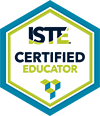Bringing Excitement to Schools Through STEM Challenge Competitions
,
Colorado Convention Center, 603
Presenters



Session description
Purpose & objective
Purpose: Bring STEM to life for students in all communities through fun and engaging competitions.
Objectives: Participants will be able to implement their own STEM Challenges in their school communities by using the blueprint provided.
Participants will be able to leverage local industry partners to help grow student competitions and student interest in STEM.
Participants will "play" some of the competitions during our session to experience the excitement and fun created in these environments. No special equipment is needed. We will go through each event with rules and descriptions to give educators a complete blueprint of how this can work.
We have implemented STEM Challenges for the previous two years and it continues to grow with each event. Students often ask if we can host them more frequently and if we can add events to the overall challenge. Industry partners are asking for more ways to get involved as judges or event sponsors because of the positive impact they see when they attend.
Outline
I. Presenter and Topic Intro (3 minutes)
II. The History of the Challenge (5 minutes)
III. Included Events (including opportunities to participate in events like Math 24, KenKen, and Quiz Bowls) (30 minutes)
IV. Scoring (5 Minutes)
V. Q&A (Remaining time)
Supporting research
https://www.brookings.edu/articles/improving-workforce-development-and-stem-education-to-preserve-americas-innovation-edge/#:~:text=According%20to%20the%20U.S.%20Bureau,and%20require%20highly%2Dtrained%20workers.
https://news.harvard.edu/gazette/story/2021/11/increasing-access-and-opportunity-in-stem-crucial-say-experts/
Session specifications
Laptop: Chromebook, Mac, PC
Tablet: Android, iOS, Windows
Empowered Learner
- Students understand the fundamental concepts of technology operations, demonstrate the ability to choose, use and troubleshoot current technologies and are able to transfer their knowledge to explore emerging technologies.
- Students know and use a deliberate design process for generating ideas, testing theories, creating innovative artifacts or solving authentic problems.
- Students break problems into component parts, extract key information, and develop descriptive models to understand complex systems or facilitate problem-solving.
 Return
Return Participate and share: Interactive session
Participate and share: Interactive session  Trips and Tours
Trips and Tours Recorded Session
Recorded Session